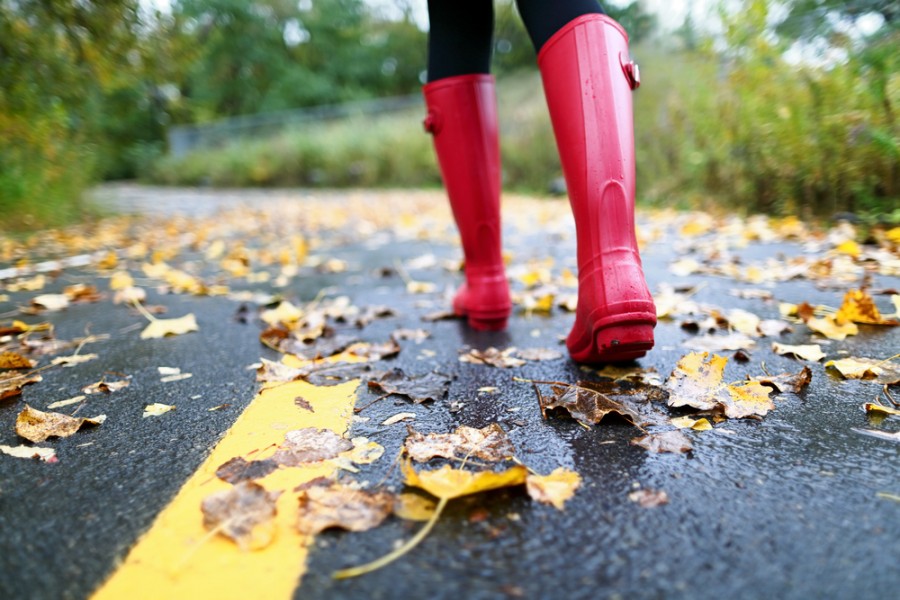Finding the motivation to exercise can be a challenge at any time of year. Add cold weather and shorter days to the mix, and working out – especially outdoors – can seem like a tremendous feat. But exercising outdoors has a range of benefits such as increasing vitamin D exposure and a general sense of wellbeing, according to several recent studies.
Many health experts recommend cold-weather walking as an opportunity to get the fitness you need.
Family physician and sports medicine expert Dr. Bob Sallis considers it a great method because of its accessibility. “Pretty much anyone can do it, and you don’t need any special equipment,” he explains.
As spokesman for Kaiser Permante’s national Every Body Walk campaign (everybodywalk.org), Sallis often encounters those who don’t believe that walking can be a powerful medicine against a range of health conditions such as obesity, diabetes, cancer, osteoporosis and even dementia. “The evidence supporting regular walking for the prevention and treatment of chronic disease is inarguable,” he says.
Ultimately, he says, the method of exercise is irrelevant. “You burn the same calories whether you run or walk a mile; walking just takes longer.” The point is just to get moving, he says, citing the U.S. Center for Disease Control and Prevention director’s recent statement that “exercise is the most powerful medicine known to man.”
And walking can be a good transitional activity for those who live a sedentary lifestyle. While indoor walking during the colder months is always an option, outdoor walking can help reduce inevitable cases of cabin fever.
“It’s really easy in the winter to stay inside and not get any fresh air, and when you’re stuck inside all day, you can go stir crazy,” explains Chris Freytag, an American College of Exercise (ACE) certified personal trainer and spokesperson, and founder of the health site Get Healthy U (gethealthyu.org). “Walking outdoors can improve mood, and it’s good for your body.”
But Freytag notes that there is some preparation involved in outdoor winter treks. Here are a few of her tips to help keep you safe:
1. Get the right gear. While you don’t need a bunch of fancy workout clothes and gadgets to stay warm, you should dress in three layers. The first, a base layer, should be tight against the skin and made from a moisture-wicking fabric to keep sweat at bay. (No cotton.) The second, an insulating layer, should keep you warm and hold heat in. Freytag suggests something like a fleece sweatshirt. The third, a weather-resistant layer, should be made from a protective material that resists the elements like snow and rain. And with the limited daytime hours in winter, make sure your outer layer has some reflective component for visibility.
For legs, Freytag likes to use two layers such as running tights with a pair of comfortable pants over the top.
Quality and weather-appropriate footwear is also a requirement. Freytag suggests looking for shoes specifically made for winter walking. It’s important that you’re wearing a more heavy duty shoe with good weather and slip resistance. Add-ons like ice cleats can also help avoid falls. Moisture-wicking socks are a must to keep feet warm and dry.
Also remember to cover your hands and head. When it’s really cold, Freytag will use disposable warmers in her gloves and shoes to keep extremities nice and toasty.
2. Go with a group. One of the major benefits of walking is its social component. Even when you’re briskly walking, which Sallis considers a moderate level of exercise, you still have the opportunity to maintain a conversation. There’s also strength in numbers in case someone gets injured or is put in a threatening situation, says Freytag.
3. Pay attention and choose the safest route. Although Freytag enjoys her walking group’s company, she’s not worried about maintaining eye contact with them. “You have to be careful with your footing and keep your eye on the road for any potential ice,” she says.
Although choosing the road less traveled may be suitable in some areas of life, keep to the roads and trails that are plowed, says Freytag. Many municipalities and forest preserves will list this information on their website.
Source: The State
November 27, 2014
By Shelby Sheehan-Bernard, Image by Shutterstock
http://www.thestate.com/2014/11/27/3839077_outdoor-walks-even-in-cold-weather.html?rh=1











